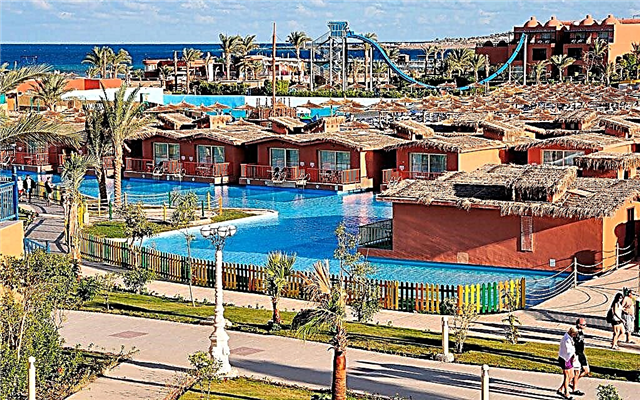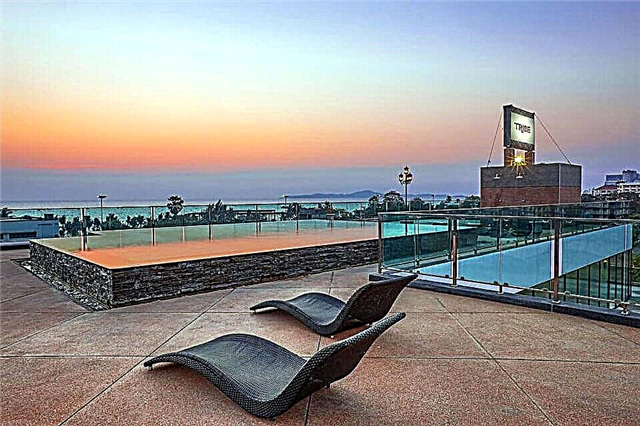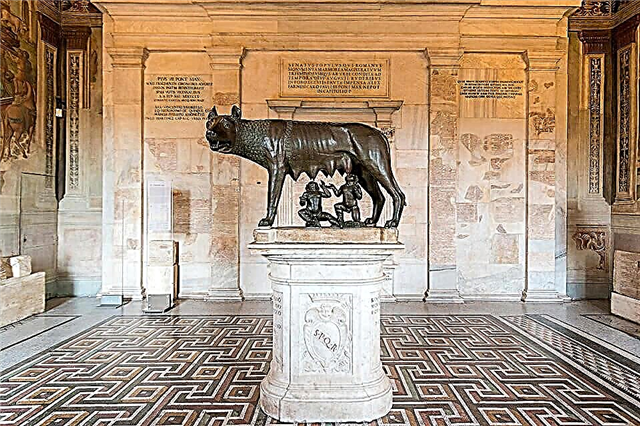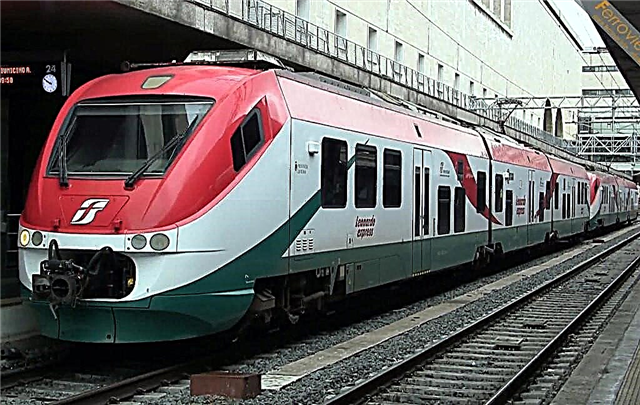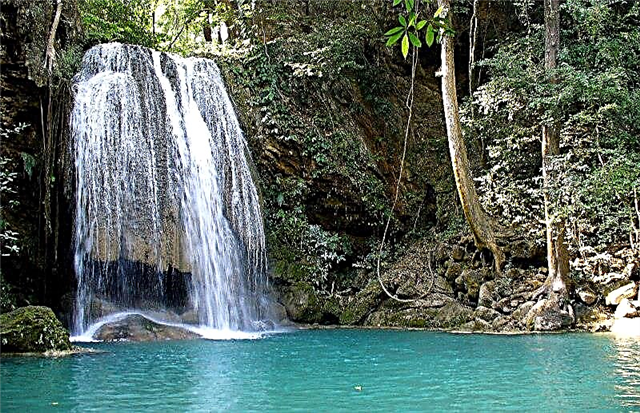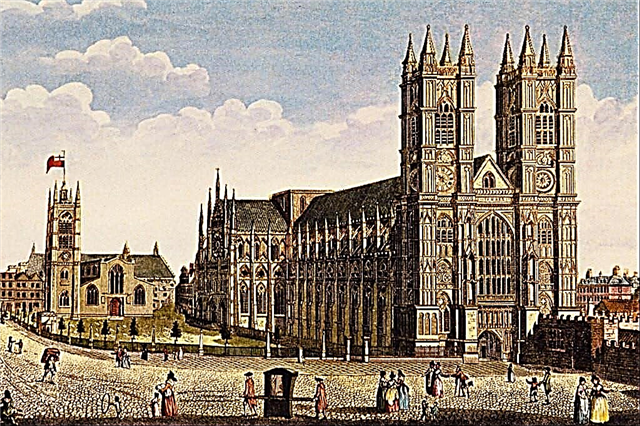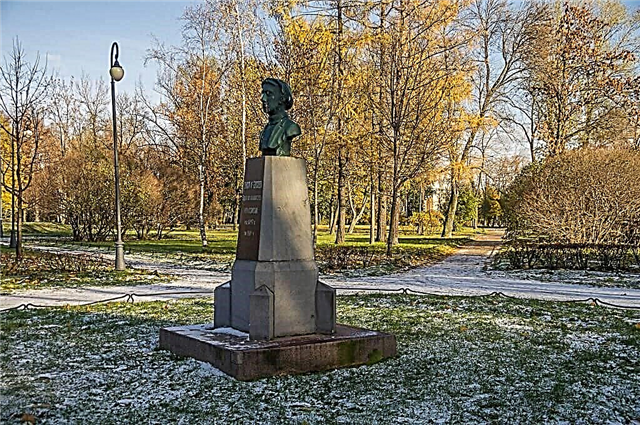St. Petersburg is a symbol of majestic human achievements and a new stage in the construction of Russian statehood. The great Peter I, challenging nature, decided to create an unsurpassed city on a swampy area. Thanks to the titanic efforts of city planners and the Russian people, a new capital of a large empire was born.
Not individual buildings were erected here, but unique architectural complexes against the backdrop of man-made natural landscapes. For a long time, tourists from all over the world have been attracted by the city with charming picturesque and beautiful places. The list of the best parks in St. Petersburg for recreation and walks will allow you to feel their multifaceted beauty.
Field of Mars

The famous Field of Mars is located in the center of St. Petersburg. The territory, with an area of nine hectares, is a large memorial and historical complex, housed in a parterre garden. The place became popular immediately after the founding of the city. There were festivities, guard parades and military exercises.
This space, covered with snow in winter and dusty in summer, was called the “Petersburg Sahara”. At the beginning of the 19th century, a monument to the great commander Alexander Suvorov was erected next to the square in the image of the ancient God of War - Mars. Hence, the name of the park was fixed as the Field of Mars.
The ennobled park appeared in 1924 after the victims of the revolution were buried in the park. Memorial pedestals and gravestones testify to those crucial events for the country. The rectangular area of the Champ de Mars is dotted with symmetrical paths lined with trees, shrubs and flowering flower beds.
There is an extensive seating area with benches. For the first time in the USSR, the "Eternal Flame" was lit on the Champ de Mars.
Park on Elagin Island (park of culture and recreation named after S.M. Kirov)

The Park of Culture and Rest on Elagin Island is a wonderful place for walking and relaxing. The current oasis of natural vegetation is named after the Soviet party leader Kirov. Among the picturesque landscapes, there is an architectural complex consisting of a former royal residence, a museum, a small zoo, a concert hall and sports grounds.

Every visitor to the park will find a favorite pastime for himself. Here you can sit quietly on a bench under the crowns of trees surrounded by squirrels jumping on branches, walk along the numerous winding shady alleys, ride a bicycle or boat on the water surface of a pond, test yourself on a suspended rope track and take part in sports competitions. The combination of natural forest and artificial plantations gives the park a variety of flora.
Well-groomed glades and lawns with all-consuming greenery are permeated with reservoirs. Old buildings of the 19th century have been preserved on the territory of the park. The main pearl is the beautiful palace, whose façade is decorated with porticoes with Ionic columns. The palace houses a museum of decorative arts.
Alexander Park

One of the first public parks in the city is located near the Peter and Paul Fortress. Its opening took place in 1845 on the day of memory of Prince Alexander Nevsky, after whom the park was later named.
Due to the close proximity to the fortification, the territory was not built up for a long time. At the initiative of the Minister of Finance of that time E.F. The Kankrina desert area began to turn into a well-kept park. The planting of trees and shrubs began, footpaths appeared, coffee shops and gazebos were located.
Over time, a People's House of Culture for the poor was erected in the park. Today, the Aleksandrovsky Park attracts visitors with flower plantations, a collection of miniature bronze sights of St. Petersburg, and an abundance of sculptural compositions.
The objects of cultural institutions will diversify the walk in the park. It houses a theater, a planetarium, a wax museum and a music hall.
Alexander Garden

The unrivaled beauty of the Alexander Garden stretches along the Admiralty building. In this place, you can calmly rest under the crowns of age-old trees and enjoy the surrounding nature. The completion of the construction of the park was timed to coincide with the 200th anniversary of the birth of Peter I.
Petersburg botanist E.L. Regel. More than three hundred trees, several thousand shrubs were planted on 9 hectares of land, and wrought-iron benches were installed.
The grand opening in 1874 was attended by Emperor Alexander II, who planted an oak here with his own hand. The garden got its name in honor of the sovereign. The majestic dome of St. Isaac's Cathedral is visible from almost anywhere in the garden.
The paths of the park, smoothly bending around the shady alleys, lead to the fountain and busts of famous figures of culture, science and diplomacy to the middle of the 19th century.
Summer Garden (Garden of Peter I)

On the swampy bank of the Neva in 1704, on the initiative of Peter I, the construction of a unique park ensemble, called the Summer Garden, began. This is the oldest park in the city, where colossal amount of work was done to improve the territory.
The swampy area was completely unsuitable for planting plants, let alone installing fountains and sculptures. We had to import tons of land and strengthen it with special structures. The natural boundaries of the park are the waters of the Neva, Fontanka, Moika and Lebyazhya Kanavka.

The summer garden was created in the style of a French park. Symmetrical alleys with evenly trimmed plantings form labyrinths of perpendicular paths. Along the paths there are about a hundred graceful sculptures brought by Peter I from Italy.
The aesthetic sculptures are restored copies of ancient marble compositions. Most of the statues were damaged during two severe floods. In addition to graceful alleys, there are many tall trees. The park has several fountains with intricate designs, as well as curly lawns with original flowerpots.
A picturesque pond, gazebos and benches leave pleasant impressions. On the territory of the garden you can see a poultry house and a greenhouse. Noteworthy is the small Summer Palace of Peter I. The two-storey and rectangular building with a high hipped roof has retained its original appearance. The facade is decorated with 29 bas-relief images and decorative stucco moldings.
Park of the 300th anniversary of St. Petersburg

On the shores of the Gulf of Finland, a new, but already popular among citizens and tourists, Park of the 300th anniversary of St. Petersburg is located. The open area is a green area of 54 hectares with a wide sandy coastline, which is separated by a granite embankment.
Along the central alley, paved with tiles, trees are lined up in a slender row and well-groomed green lawns with flower beds are laid out. Paved paths cut across the wide area. More than 300 species of ornamental apple trees, hundreds of shrubs and lindens grow here.
The main objects of the park are fountains, a swimming pool, a stylized column-lighthouse, a large water park and a business center. There are areas with attractions and playgrounds for outdoor activities. Vacationers can sit on the grass or sit on one of the many benches.
Everything around is striking in its culture and pure. This is a place from where you can observe magnificent views of the Gulf of Finland while enjoying a light breeze.
Moscow Victory Park

There is a place in the city that is inspired both by the tragic events of the military blockade and the joyful return to a happy, peaceful life. This is the Moscow Victory Park, founded in 1945. The park is laid out on the territory of the formerly occupied by a brick factory.
During the war, the enterprise was converted into a crematorium, where the besieged Leningraders who died of cold and hunger were burned. The memorial alley with obelisks and steles serves as a memory for hundreds of thousands of victims who did not wait for the Great Victory. There is an alley in the park along which granite pedestals with busts of the heroes of the USSR are installed.
The place is not only a reminder of the difficult years of the blockade. The park is a wide area for a pleasant walk. This is facilitated by picturesque landscapes, well-groomed shady alleys, playgrounds, attractions and sports facilities.
Thousands of trees are planted here, among which pines, spruces, lindens, oaks and birches stand out. Lawns, flower beds and shrubs are laid out. Visitors to the park can ride a boat on the pond or on a Ferris wheel, play tennis on one of the courts, and enjoy the silence and beautiful nature.
Okhta Park Resort

The famous resort of the Leningrad region - "Okhta Park" is located 10 kilometers from the Northern capital. This is a cottage village where you can actively spend your holidays among the picturesque pine forest at the headwaters of the Okhta River.
The resort offers tourists a wide range of sports and entertainment services designed for all tastes and ages. Winter sports enthusiasts are especially attracted by well-equipped ski slopes, ski slopes, skating rink and all kinds of attractions. You can go down the steep slope on an inflatable sleigh.
Despite the small height of the mountainous landscape of the park, you can feel the breathtaking speed here. Fascinating routes of varying difficulty are laid through the rugged terrain of the forest. On the territory of the resort there are gyms, a system of outdoor swimming pools with heated water and spa bath complexes.
With the onset of the summer season in Okhta Park, you can spend a wonderful vacation no less interesting than in winter. There are recreation areas with hammocks and sun loungers, numerous attractions for children, sports grounds and an abundance of outdoor pools.
Lapland Park

You can plunge into the atmosphere of a winter holiday, go ice skating and visit a deer farm on Krestovsky Island in Lapland Park. This place is chosen by visitors during the winter holidays. There are acceptable conditions for a full-fledged fun family vacation.
The outdoor ice rink is filled with artificial ice. A special refrigeration system constantly maintains the ice temperature necessary for skiing, so you should not be afraid of the vagaries of the rainy weather in St. Petersburg.
There is a rental point at the service of visitors, where you can take skates of any size, a helmet, as well as an auxiliary figure for maintaining the balance of children on the ice. You are allowed to come here with your own skates.
On the territory there is a small deer farm with several aviaries. Guests can feed the inhabitants of the Far North and admire these animals in plenty.
Mikhailovsky Garden

Next to the colorful Church of the Ascension of Christ is one of the best examples of landscape art in St. Petersburg - Mikhailovsky Garden. The park stretches along Sadovaya Street and adjoins the city's waterways on both sides - the Griboyedov Canal and the Moika River.
A magnificent gateway with wrought iron ornaments and tiled pillars serves as the main entrance to the beautiful garden. Since the 18th century, the park has gone through several stages of its formation. At the time of foundation, hunting grounds were located here.
During the reign of Empress Elizabeth Petrovna, two large figured ponds were dug, several small reservoirs for breeding carp and geometrically correct shapes of labyrinths were designed - alleys with fountains and greenhouses.
In the 19th century, significant changes took place in the appearance of the garden. Here, on the initiative of Paul I, the Mikhailovsky Castle was erected and a huge court lawn was laid out. Instead of a symmetrical and strict planning of the park territory, a more free arrangement of plantings appears.
Walking through the Mikhailovsky Garden, you can retire in the shady alleys under the crowns of age-old trees, admire the flowering flower beds, an amazingly green meadow and the view of the decorated facades of the Mikhailovsky Palace.
New Holland

The central part of St. Petersburg is located on 42 islands, among which the most special and only man-made is a piece of land called New Holland. The history of this place dates back to 1704, when convenient delivery of timber to the shipyard was needed for the construction of the fleet.
Two canals were dug, which connected with the Neva and Moika rivers. As a result, a small triangular island was formed, which became a place for the arrangement of warehouses for ship timber.

The island was built up gradually. First, wooden buildings were erected, over time, stone and brick buildings appeared. In addition to warehouses, an arch appeared here, personifying the entrance of the Moika River into the inner reservoir of the island, a ring-shaped prison and various workshops.
A special architectural ensemble has been formed on the island. New Holland will leave pleasant impressions for vacationers. This is a landscaped area with well-groomed green lawns, gravel and sidewalk paths, alleys of trees, shrubs and flowers.
There is a large playground in the shape of a ship's hull. The prison building has become a shopping and entertainment complex, and festivals, fairs and concerts are held in other buildings.
Gorilla Park

Gorilla Park is a great place for active people. The park is 4000 m2 area of the shopping and entertainment complex "Five Lakes". There is a huge selection of attractions located in special play areas. These are rock climbing walls, trampolines, bungee cages, rope grounds, game labyrinths, downhill slopes, laser combat arenas, an abundance of board games and many other entertainment arenas.
Each visitor has the opportunity to test his strength, agility, endurance and courage. An excellent alternative to fitness rooms is climbing high pillars and bizarre walls, climbing rope trails at a height of 7 meters from the floor, jumping on gymnastic trampolines and bungee jumping, making high-speed flight at a height of 10 meters.
For younger visitors, there are labyrinths, slides, climbing ladders. If you feel hungry, you can head to the park cafe, which serves mouth-watering dishes.
Park Dubki

On the shore of the Gulf of Finland in the resort area of St. Petersburg, namely in Sestroretsk, there is a picturesque place where you can relax in the bosom of nature and retire from the bustle of the city. This is Dubki Park, founded on the initiative of Emperor Peter I in 1714.
The sovereign had a country residence here, around which thousands of young oak trees were planted, which eventually gave the name to the park.

The territory of the Dubki park is very spacious. Here you can find entertainment for every taste, both for children and adults. Well-groomed alleys, framed by groves of deciduous and pine trees, emerge from the silence of the forest to the coastline of the Gulf of Finland. Vacationers are guaranteed a pleasant fresh breath of the sea breeze and admire the beautiful views of the bay.
The abundance of leisure options is impressive. In summer, tennis courts, an autodrome, shooting galleries, and a football field with stands are popular. You can rent a boat, bicycle or velomobile. For lovers of horseback riding, there is an equestrian center.
On one of the lawns there is a "Glade of Fairy Tales", which is inhabited by wooden figurines of various fairy-tale characters. Nearby there is a large playground with slides and swings.
Andersengrad

80 kilometers from St. Petersburg, among the pine trees and sand dunes, lies the cozy town of Sosnovy Bor. This place is famous for its amazing park, descended from the pages of the works of Hans Christian Andersen. Andersengrad is a vast gaming complex, built in the style of ancient European cities of the XVI-XIX centuries.
There are various buildings in the park. The atmosphere of fairy tales reigns everywhere. Small castles with loopholes, towers with spiers, houses with a red roof and fancy weather vane, the town hall, narrow streets - all this is conducive to a pleasant family walk.
Every element is given attention here. The square is paved with cobblestones, weather vane is spinning, there are many ladders, secret doors, bridges and wrought-iron gates. Sculptures of famous fairy-tale characters appear in all their glory.
The Little Mermaid sits alone on a stone and looks into the distance with hope, the Tin Soldier stands at ease. The only thing that brings back to modern life is the presence of a track for little cars, which can be rented right there.
Tauride Gardens

Hardly anyone will remain indifferent when visiting the famous Tauride Garden and will not be captivated by the beauty of its landscape landscapes and architectural structures. One of the main symbols of the city, whose name is associated with the old name of the Crimea - Tavria, was destroyed at the end of the 18th century.
Catherine II, who conferred on Grigory Potemkin the rank of Field Marshal and the title of Prince for his conquest of the Crimea, presented the favorite with a palace. Already during the construction of the palace, a landscape garden began to be created around it, planted around the perimeter with trees brought from England.
Stocked ponds with swans, canals, picturesque hills, a greenhouse, etc. appeared. Until 1861, only members of the royal family and those close to them had the right to visit the garden and park masterpiece.
Having opened to the general public, the park has become the most popular place in the city all year round. Recognized masters continued to work on its improvement. Instead of a massive fence made of logs, an elegant cast-iron lattice (1869) appeared, over which time has no power.
The work of A. Bruni still fascinates the townspeople and tourists with its beauty. The pool also attracts everyone's attention, where in the center there is a fountain crowned with the sculpture "Boy with a duck" (1910). After the theft of the sculpture, a copy of it was installed here.
A visit to the Orangery, the premises of which is immersed in the bright colors of exotic plants, is an undoubted pleasure. In the exhibition hall, you can see many rare specimens of flora.
There is a café, a concert hall and a flower shop. The Tauride Garden is in no way inferior to the best parks in Europe.
Catherine park

The most vivid impressions are left by a visit to the open-air museum, a reserve included in the UNESCO World Heritage List - Catherine Park. The royal heritage, spread over 107 hectares, preserved for future generations, cannot but amaze with its content.
The name of this place "Tsarskoe Selo" in the Russian version came from the Swedes. After the victory over the Swedes, Peter I presented the estate to Catherine I, after which they immediately began to build the Catherine Palace. Today, the majestic building after restoration amazes the imagination with its grandeur, bright colors of the facades and gilded decorations.
The adjacent park also delights in beauty. The decoration of the territory in front of the palace around the Mirror Pond with a fountain is amazing. Green patterns of lawns, a garden with many dwarf trees can be admired as a work of art.
Perfect marble sculptures evoke aesthetic senses. Among the reservoirs are the Upper and Lower Baths, in one of which the Empress herself bathed. The architectural monuments that have survived from the Catherine's era are pleasing.
An impressive walk through the Cameron Gallery leading to the Hanging Gardens. The gallery room is decorated with busts of philosophers, the Freilin garden. Temporary exhibitions are organized on the 1st floor of the gallery. Marble Bridge, Pyramid, Red Cascade, Gothic Gate - there is something to see for the most sophisticated tourists.
Seaside Park Victory

After the magnificent beauty of Yekaterininsky, this park, founded in honor of the victories of Soviet sailors in the war of 1941-45, will seem more modest. But this does not mean that there is no attraction here.
A green oasis is located on Krestovsky Island, where farms were located in the Petrine era. During the governorship of A. Menshikov (early 18th century), the first steps were taken in the area of park improvement. But later all work was stopped.
The modern park area was formed in the fall of 1945. The townspeople literally planted a lot of lindens, lawns and flower beds literally in October 1 day. There is a square in the center, from where the park alleys begin. Among them is the one on which guests from Manchester, Milan and Dresden plant oak trees.
The monuments "The Girl Meets the Winners" and "The Sailor-Chernomorets" became the symbols of victory. In those years, the main alley led to the stadium. Kirov, which was demolished in 2006, having built a modern sports facility "Gazprom-Arena". Today, new bridges have been laid here, through which it is easy to get to the island.
It is wonderful to walk here under the shady crowns of lindens, maples, ash trees, oaks and many other trees (50 species in total). Ducks and swans are found in the lake and ponds. There is even a swan nursery. The favorite pastime of visitors is bird feeding, boating.
The northern side of the park is occupied by rides and a rowing canal. In the opposite part there is a wonderful playground for children. Not far from it there is a Stele in the sign of Victory.
Museum-Estate of Derzhavin

The opening of the cultural and educational complex in the Derzhavin estate in 2003 is an important event in the life of all of Russia. For 25 years, the mansion of the famous poet served as a center of culture and education.
The flower of the creative intelligentsia gathered here, the topical problems of Russian literature were discussed. The complex includes several buildings, a front yard and a garden. The expositions are deployed in 16 halls with interiors of the Derzhavin era.
One cannot but arouse admiration The straw living room of the 1st floor, the walls of which are decorated with wallpaper embroidered with patterns made of straw (work by E. M. Derzhavina and M. A. Lvova). Particular attention is drawn to the poet's study, restored from drawings and memories of friends.
The room is furnished with furniture designed by Derzhavin himself: a sofa with side tables on the sides, trompe l'oeil wardrobes, etc. Among the numerous exhibits are the originals of Derzhavin's portraits, exclusive furniture, objects of applied art, painting, graphics.
Works of Russian literature are presented in 5 halls: books, magazines, manuscripts. An entire gallery is reserved for sculptures and portraits of poets, writers and other literary figures of the 18-19th centuries. There is a permanent exhibition "Owners of the Russian Lyre" dedicated to the life and work of Derzhavin and Pushkin.
All expositional content recreates the true atmosphere of literary life in the era of great poets. Of undoubted interest are the permanent exhibitions "In the white gloss of porcelain", "Pages of history". The restored "Derzhavin's Home Theater" is functioning, where performances and concerts are held.
Garden January 9

A charming landscape and park island located in the epicenter of the metropolis is known as the first of the gardens laid after 1917. It was equipped on the day of the first All-Union Communist Saturday cleanup on 1.01.1920 on a historical site.
From here on Bloody Sunday the workers of the Narva Outpost moved to the Winter Palace with a petition. The name of the garden was dedicated to the victims of the executed peaceful procession.The green spaces were fenced off with the famous forged lattice, which was awarded 2 gold medals at the Paris Exhibition.
The garden near the Winter Palace was fenced in with a masterpiece of metal forging (architect Melzer), in 1924 it was moved to the Garden on January 9th. The proximity of the park to the front line and the blockade played a fatal role in its fate. The trees were cut down for firewood, the territory was occupied with vegetable gardens, and the buildings were damaged by shelling.
But in the early 50s, 20 to the garden on January 9 was restored and donated to children. Today, after restoration in the 90s, there are many playgrounds and sports grounds. Terrainkurs, bike paths have been laid, the "Young Technician" circle is functioning.
The unique fence has also undergone restoration, which returned it to its original appearance. Green lawns and lawns, ponds, cozy alleys delight the townspeople who come here. The park is visited not only by children, but also by people of different ages, mothers with strollers.
Murinsky park

The new park site, equipped in the early 2000s, got its name from the village of Murino. It is located at the mouth of the Murinsky brook - the right tributary of the river. Oh you. In the 60s, it became a kind of border between 2 districts under construction.
As a result of active construction, the Murinsky Stream experienced an ecological disaster. Therefore, in the 21st century. implemented the decision taken back in the 80s to create a park zone near the stream. The channel was cleared of debris, the adjacent lands were reclaimed, trees were planted, flower beds were laid out, ponds were dug.
The total area of the floristic oasis is 150 hectares, which is under the jurisdiction of OJSC “Murinsky Park”. For residents of Vyborg and Kalininsky districts, a wonderful oasis of nature has become a favorite vacation spot.
Perfectly landscaped, with good infrastructure, it attracts visitors here at any time of the year. In the evening, alleys and platforms are illuminated with LED lights. Cycling tracks have been laid here, on which you can ride not only bicycles, but also rollerblades, skateboards, scooters.
There is a ski and roller track, opened in 2018 and actively used by skiers. In Murinsky Park, holidays are held, concerts, mass festivities are organized. The improvement of the unique zone continues.

